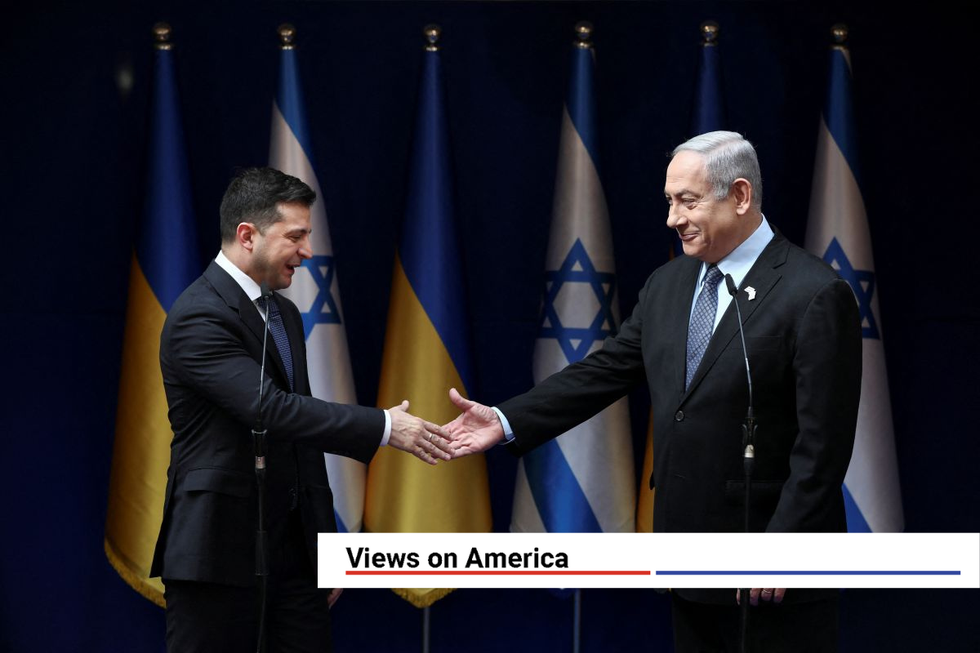The coming days, weeks, and months will be fraught with uncertainty and breath-holding in the Middle East. Even if initial commitments are met to release hostages and for Israel to pull back troops from Gaza, there are no guarantees of a reconcilable peace. But it appears more possible than at any point over the past twenty-four months that the devastating chapter of October 7th and its aftermath may soon be over.
Europe take heed
Across Europe, the time for introspection is only beginning. Models of the US administration’s foreign policy objectives and strategy (and of Trump) must be updated in the wake of recent developments. What will potential success in the Middle East mean for the war in Ukraine? European capitals would do well to quickly undertake scenario and contingency planning.
There are two main possibilities. In the first, enlivened by progress in the Middle East, the US administration circles back again to European stakeholders. Trump campaigned in 2024 on ending the war in Ukraine on “Day 1.” Just days ahead of taking office for a second time, the incoming president extended the timeline to the first six months, perhaps in recognition of the task ahead. In his inaugural address Trump suggested: “My proudest legacy will be that of a peacemaker and unifier. That’s what I want to be: a peacemaker and a unifier.” An early misfiring with Ukrainian President Volodymyr Zelensky at the White House in February over a rare earths agreement was smoothed over. After Trump met with Russian President Vladimir Putin in Alaska in August, there was momentum, if not optimism, for continued communication. A potential follow-up trilateral session between Trump, Putin and Zelensky was considered for the fall. Always a shrewd observer of the man, Zelensky reportedly pledged to nominate Trump for the Nobel Peace prize should he broker a ceasefire with Russia.
Despite these headline making developments, a growing uneasiness in Europe has slowly taken root. Indicators of the US direction of travel vis-à-vis Ukraine, if read correctly, appear to be pointing in a discouraging direction. During the United Nations General Assembly last month, the president posted on Truth Social that after getting to know the economic and military situation, Ukraine could win the war against Russia and regain all of its territory. The sentiment had an immediate buoying effect for a European audience that had long (privately) suspected that territorial losses as part of any peace settlement was inevitable. The message of possible victory, however, was quickly followed with a backhanded assertion that it would be through the European Union, Europe, and NATO that Ukraine would regain territorial integrity.
And herein lies the second possibility ahead: that the US administration no longer needs a victory in Ukraine. That the US administration accepts the limits of personal diplomacy. That no trilateral summit ever materializes. That with a quick resolution beyond reach, the Trump administration looks to quietly back out and close the door on its peace negotiation efforts. According to Russian Deputy Foreign Minister Sergei Ryabkov this week, “Anchorage's powerful momentum in favor of agreements has been largely exhausted.”
Narrowing interest for Ukraine
None of this is to say that the US is likely to curtail all support and overtures for Ukraine. After multiple incursions over NATO airspace by Russian drones in recent weeks, a deal for Ukraine to purchase a limited set of US Tomahawk missiles appears increasingly likely. According to polling, Americans (including Trump’s Republican base) continue to support Ukraine and see the US as having a responsibility towards helping the country. Yet, there has also been a large decline in belief that Russia’s invasion poses a major threat to US interests. Trump is asking himself the same question. How much does Ukraine mean to the US? How much would peace in Ukraine benefit the US, and perhaps more pointedly, benefit the president?
An end to the conflict in Israel raises the specter of Saudi-Israel normalization, wider regional integration, greater market access for the US in the region and in Trump’s loftiest dreams both a Nobel Peace Prize and Gaza-a-Lago. The end of war in Ukraine looks to Trump like good business for Europe, even existential for Europe, but increasingly less so for the US. Against these shifting dynamics there is a principle coming into focus: US interests are narrowing. The administration is willing to continue to provide financial and capability resources to Ukraine, but these will not be paid for by the US.
The Trump backstop may not be coming for Europe.

